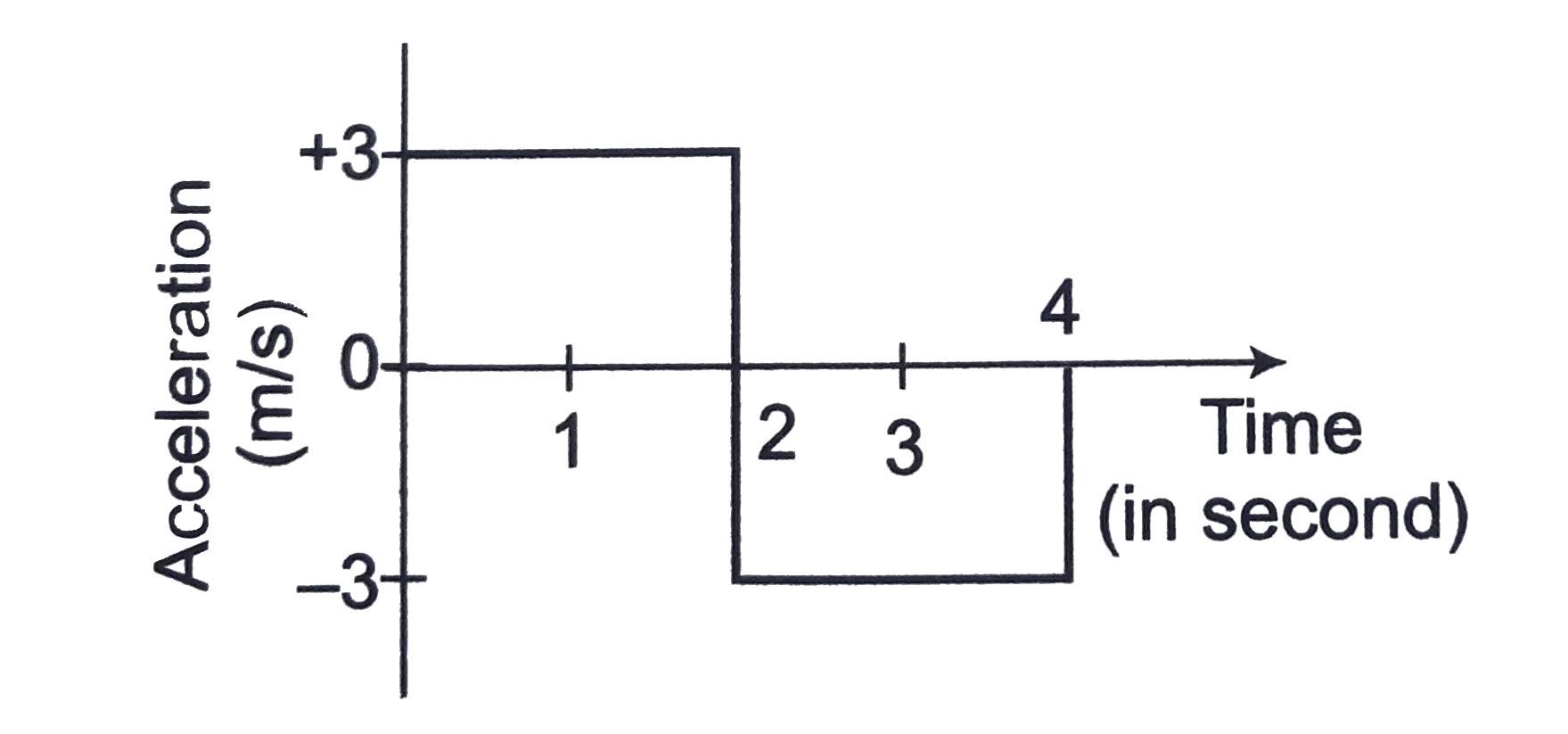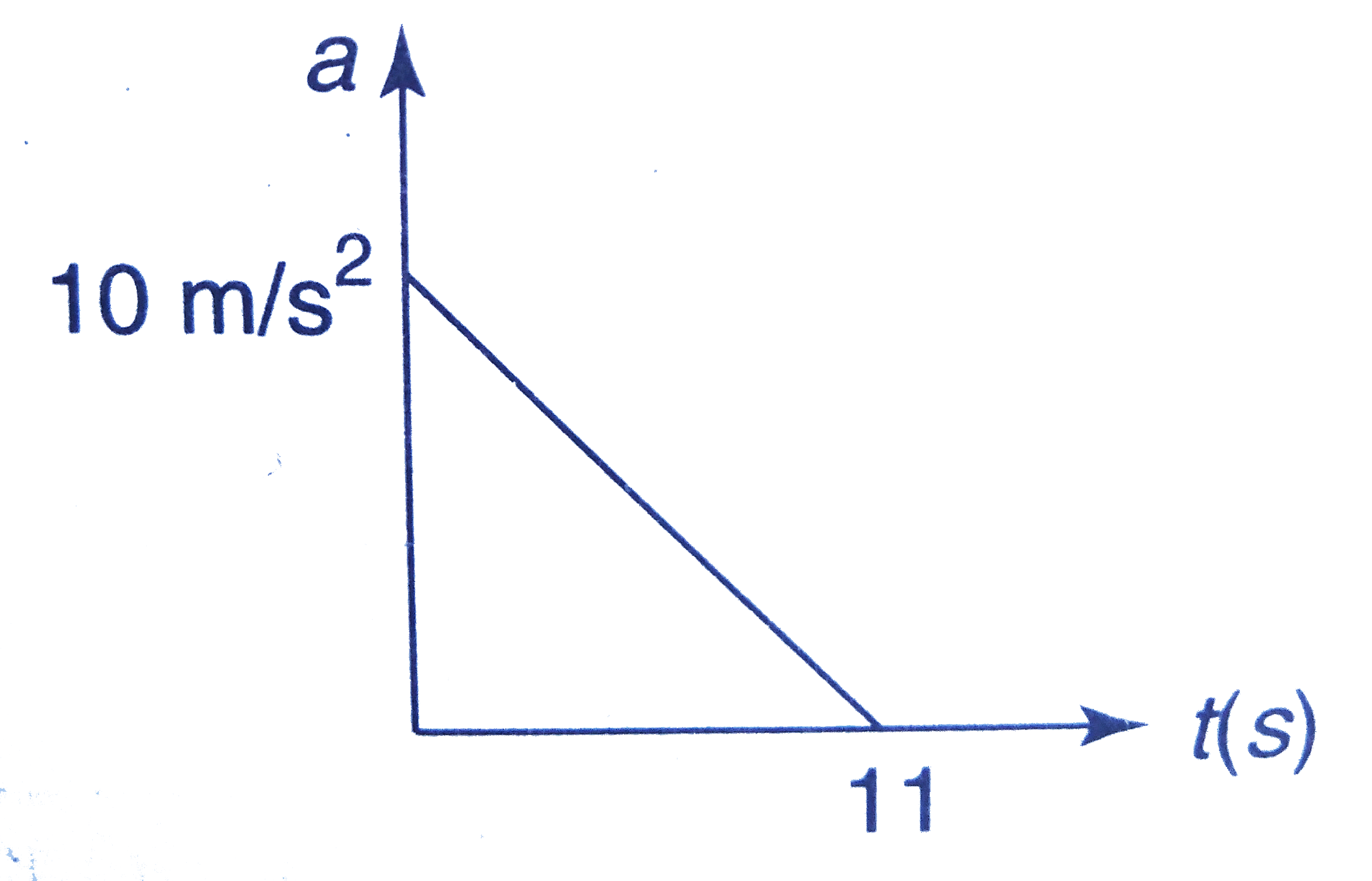Starting from rest, the acceleration of a particle is a=2(t−1). The velocity (i.e.v=∫ a dt ) of the particle at t=10 s is :-
15 m/s
25 m/s
5 m/s
80 m/s
The correct Answer is:D
To solve the problem, we need to determine the velocity of a particle at t=10 seconds given its acceleration a=2(t−1) and that it starts from rest.
1. Understand the given acceleration:
The acceleration of the particle is given by:
a=2(t−1)
2. Set up the integral for velocity:
Since the particle starts from rest, we can find the velocity by integrating the acceleration with respect to time. The velocity v can be expressed as:
v(t)=∫adt=∫2(t−1)dt
3. Perform the integration:
We will integrate 2(t−1):
v(t)=∫2(t−1)dt=2(t22−t)+C=t2−2t+C
Here, C is the constant of integration.
4. Determine the constant of integration:
Since the particle starts from rest at t=0, we have:
v(0)=0⟹02−2(0)+C=0⟹C=0
Thus, the expression for velocity simplifies to:
v(t)=t2−2t
5. Calculate the velocity at t=10 seconds:
Now we substitute t=10 into the velocity equation:
v(10)=102−2(10)=100−20=80m/s
Final Answer:
The velocity of the particle at t=10 seconds is:
80m/s
The acceleration of the particle is given by:
a=2(t−1)
Since the particle starts from rest, we can find the velocity by integrating the acceleration with respect to time. The velocity v can be expressed as:
v(t)=∫adt=∫2(t−1)dt
We will integrate 2(t−1):
v(t)=∫2(t−1)dt=2(t22−t)+C=t2−2t+C
Here, C is the constant of integration.
Since the particle starts from rest at t=0, we have:
v(0)=0⟹02−2(0)+C=0⟹C=0
Thus, the expression for velocity simplifies to:
v(t)=t2−2t
Now we substitute t=10 into the velocity equation:
v(10)=102−2(10)=100−20=80m/s
The velocity of the particle at t=10 seconds is:
80m/s
Topper's Solved these Questions
- RACEBOOK - ALLENCHAPTER - RACEEXERCISE - Basic Maths (Graphs))
29 Videos
- RACEBOOK - ALLENCHAPTER - RACEEXERCISE - Basic Maths (Co-ordinate & Algebra)
37 Videos
- RACEBOOK - ALLENCHAPTER - RACEEXERCISE - Basic Maths (Differentiation)
38 Videos
- NEWTONS LAWS OF MOTIONBOOK - ALLENCHAPTER - NEWTONS LAWS OF MOTIONEXERCISE - EXERCISE-III
28 Videos
- SIMPLE HARMONIC MOTIONBOOK - ALLENCHAPTER - SIMPLE HARMONIC MOTIONEXERCISE - Example
1 Videos
Similar Questions
Starting from rest, the acceleration of a particle is a=2(t-1). The velocity of the particle at t=5s is :-
View SolutionA particle starts from rest and moves with an acceleration of a={2+|t−2|}m/s2 The velocity of the particle at t=4 sec is
View SolutionA particle starts from rest and moves with an acceleration of a={2+|t−2|}m/s2 The velocity of the particle at t=4 sec is
View SolutionThe acceleration of a'particle starting from rest, varies with time according to the relation a=kt+c. The velocity of the particle after time t will be :
View SolutionThe acceleration a of a particle starting from rest varies with time according to relation, a=αt+β. Find the velocity of the particle at time instant t.
Strategy : a=dvdt
View SolutionA particle starts from rest at t=0 and moves in a straight line with an acceleration as shown below. The velocity of the particle at t=3 s is

View SolutionA particle starting from rest. Its acceleration (a) versus time (t) is as shown in the figure.
The maximum speed of the particle will be.

View SolutionA particle starting from rest. Its acceleration (a) versus time (t) is as shown in the figure.
The maximum speed of the particle will be.

View SolutionVelocity of a particle is given as v=(2t2−3)m/s. The acceleration of particle at t = 3s will be :
View SolutionA particla starting from rest undergoes acceleration given by a=|t−2| m/s2 where t is time in sec. Find velocity of particle after 4 sec. is :-
View Solution
